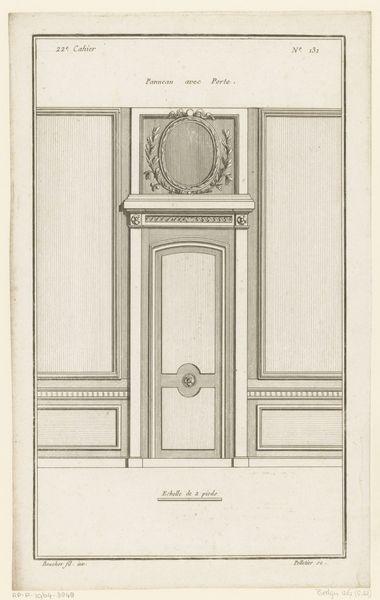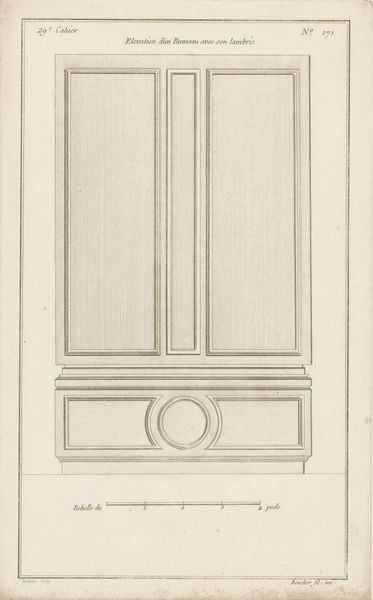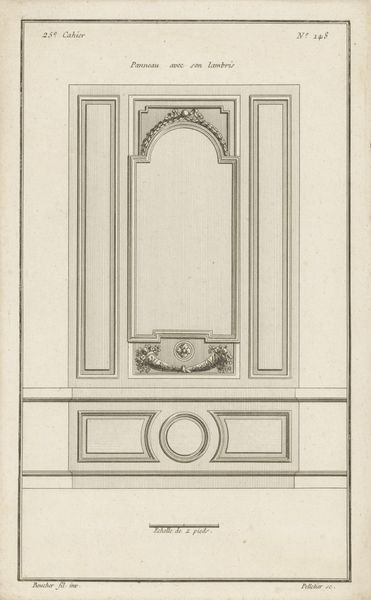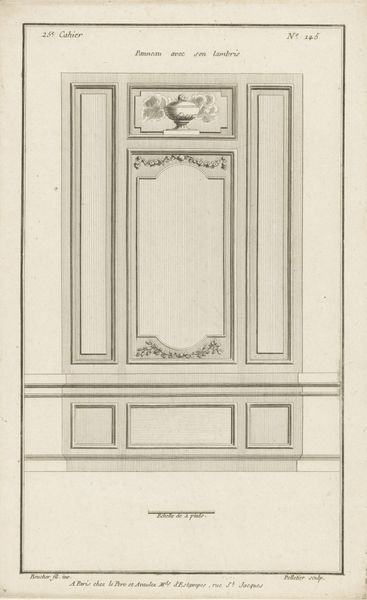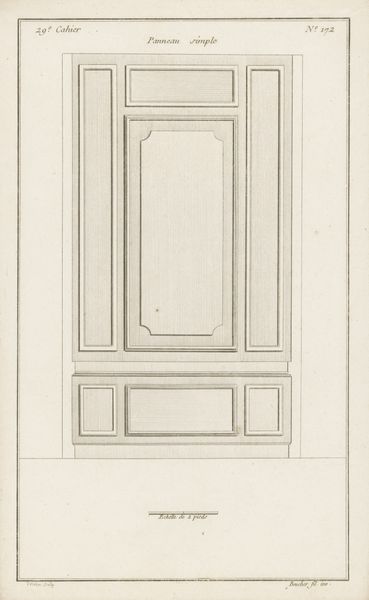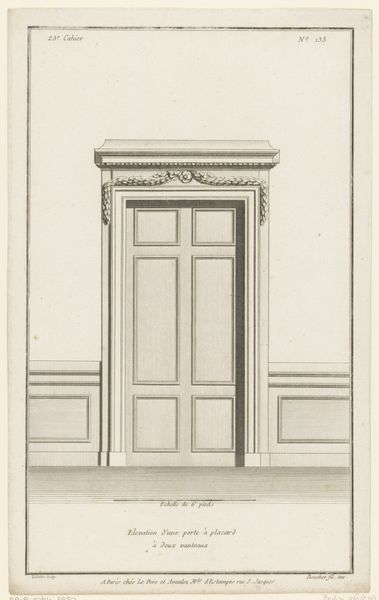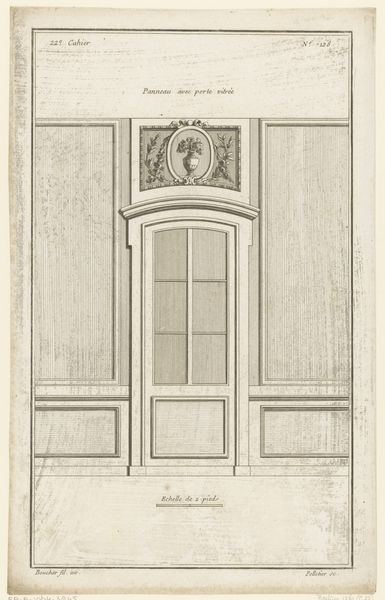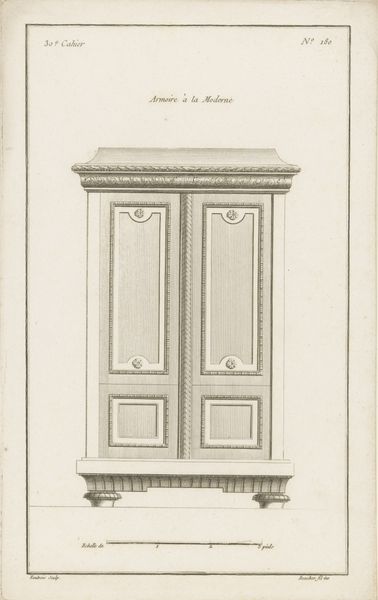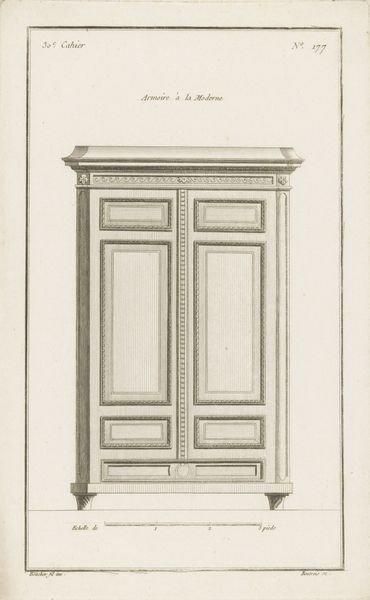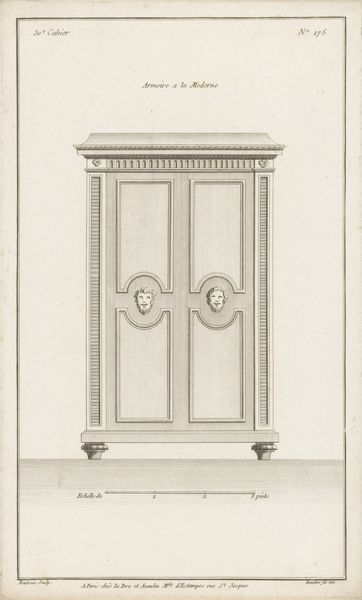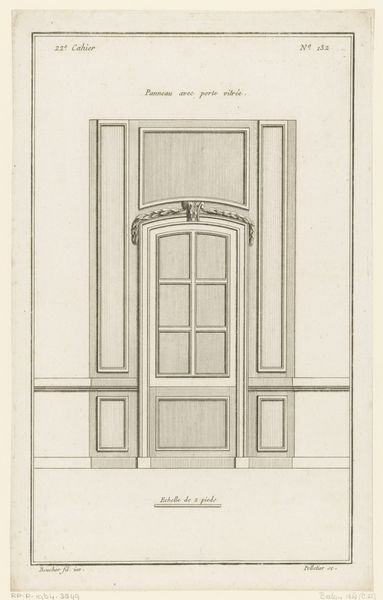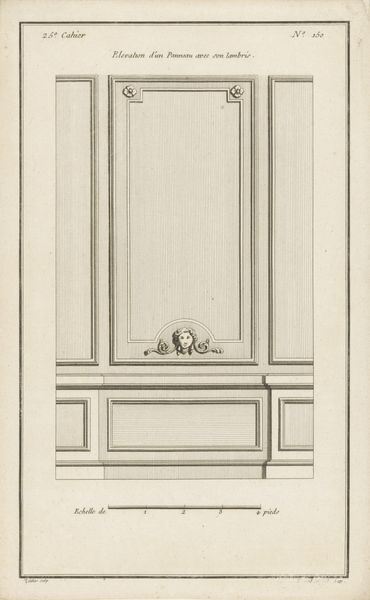
drawing, engraving, architecture
#
beige
#
drawing
#
neoclacissism
#
aged paper
#
homemade paper
#
pastel soft colours
#
muted colour palette
#
parchment
#
light coloured
#
white palette
#
nude colour palette
#
geometric
#
line
#
soft colour palette
#
engraving
#
architecture
Dimensions: height 328 mm, width 203 mm
Copyright: Rijks Museum: Open Domain
Curator: Take a moment to appreciate this delicate engraving, “Panelen met bloemmotieven,” or “Panels with floral motifs,” created by Jean Pelletier between 1772 and 1779. It is held here at the Rijksmuseum. Editor: There's an almost austere elegance. The repeated rectangular forms create a sense of structured harmony, yet those floral insets soften the rigidity, like tiny rebellions. Curator: Precisely! It speaks volumes about the Neoclassical period—a deliberate return to order after the flamboyance of the Rococo. Pelletier's composition showcases the architectural ideals of the time, embracing symmetry and restraint. The geometric paneling echoes a desire for rationality and clear structure, reflecting the values of the Enlightenment. Editor: And it's all so muted, so incredibly WASP! Was this design accessible to anyone outside a privileged elite? These symmetrical patterns speak of control. Curator: While this specific rendering may have been created within privileged artistic circles, its aesthetic roots penetrate deeper into societal patterns of that era. The floral motifs, common symbols, resonate as images of idealised feminine nature. What meaning can be interpreted across periods? The floral forms soften those structural demands to suggest the natural in harmony with rational artifice. Editor: True, flowers are classic tropes of submission to nature. I suppose my question, framed in terms of then-contemporary political discourse, would be, how were the arts instrumentalized to buttress traditional cultural assumptions about gender roles? Who benefitted from it, who suffered? It's essential to contextualize visual languages like these within existing socioeconomic hierarchies. Curator: That intersection between art and the structures upholding it must be reckoned with. At the time this engraving was produced, architecture was intertwined with a specific ideology - both echoing established power networks and introducing disruptive nuances into those social arrangements through ornamental iconography. How did people living under patriarchy internalize such structures visually, symbolically and emotionally? Editor: In many ways, they're still with us, still influencing expectations about beauty, space, and power. I find it hard to look at this without feeling a distinct sense of ambivalence. Curator: Ambivalence is appropriate, and a crucial part of understanding not only its historical position, but also its enduring relevance as a reminder that all symbolic language operates through an intricate system of interpretation over epochs of shifting meanings. Editor: Agreed. Recognizing the multiple layers of art’s effects—historical and contemporary—offers insight into our assumptions and invites resistance toward them.
Comments
No comments
Be the first to comment and join the conversation on the ultimate creative platform.
